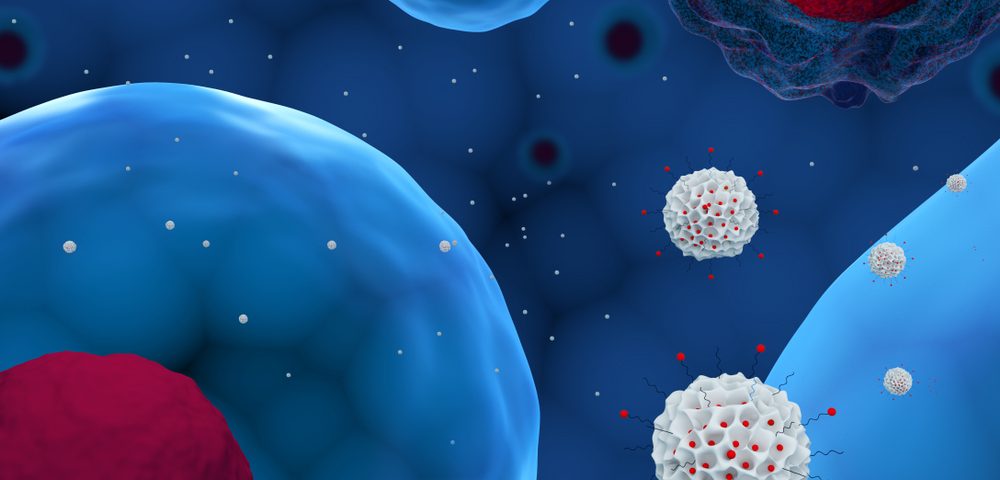A naturally occurring protein, called Tinagl1, suppressed the growth and spread of triple-negative breast cancer (TNBC) in mice by simultaneously targeting two cancer-promoting molecular pathways, a study shows.
The study, “Tinagl1 Suppresses Triple-Negative Breast Cancer Progression and Metastasis by Simultaneously Inhibiting Integrin/FAK and EGFR Signaling,” was published in the journal Cancer Cell.
TNBC accounts for about one-fifth of breast cancer cases, and derives its name because tumors don’t produce any of the three hormone receptors that are common in breast cancer: progesterone receptor, estrogen receptor, or HER2.
In other breast cancer types, these receptors can be therapeutically targeted to treat patients. However, TNBC is less well-understood and is often driven by multiple interconnecting mutations and molecular pathways. Thus, there are fewer treatments available to patients with TNBC, leading to poor prognoses.
Some strategies specifically targeting a specific molecular pathway have been tried in TNBC, but these frequently have had lackluster results; tumors often have redundancies in their molecular signaling networks that allow them to quickly become resistant to the inhibition of a single pathway.
Therefore, researchers at Princeton University investigated whether Tinagl1 might be a better candidate for an anti-tumor agent, as it can suppress two distinct tumor pathways.
“People have tried to block the spread of this form of cancer but attempts so far have failed because if you try one approach, the cancer cells compensate by finding a way to escape. With this new approach, the treatment blocks both pathways at the same time. It is like having one stone that kills two birds,” Yibin Kang, molecular biology professor at Princeton, and senior author of the study, stated on the university’s website.
Specifically, Tingal1 inhibits both the epidermal growth factor receptor (EGFR) and several molecules called integrins. EGFR is often mutated and/or over-produced in cancer cells, and can play a role in tumor growth. It has been tried as a sole target for TNBC therapy, but with limited success.
Integrins are key proteins that determine how cells interact with their environment and migrate. They can also play a role in tumors. Tinagl1 can inhibit the tumor-promoting action of integrins by interacting with a protein called focal adhesion kinase, which is also a known tumor-driver.
When the researchers analyzed data from more than 800 TNBC patients, they found that higher expression of Tinagl1 correlated with a better prognosis for patients.
The researchers then elevated Tinagl1 levels in TNBC cell lines and mouse tumor cells. The growth of these cells slowed remarkably when they had more Tinagl1, supporting the tumor-inhibiting function of this protein.
The researchers then administered Tinagl1 protein to mice with mammary tumors. After 7 weeks, mice administered Tinagl1 had significantly smaller tumors than controls — although none were cured.
Much research still needs to be done before therapies are tried in humans, but the researchers are optimistic that their study could spur further investigations into Tinagl1.
“Future studies should explore the potential therapeutic benefit of Tinagl1 in diverse cancer types driven by EGFR and integrin pathways,” they wrote.

